Translate JSON File
Translate any of your JSON files with our AI translator, just upload and get your translation immediately
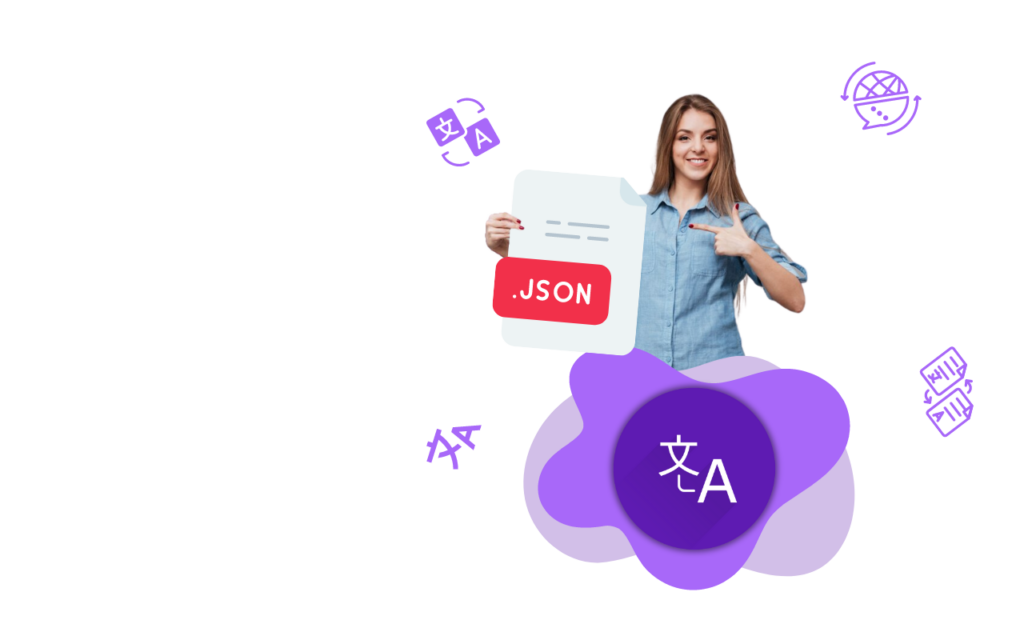
Translate any of your JSON files with our AI translator, just upload and get your translation immediately

Leading organizations around the world trust Doc Translator


To translate a JSON file, you can use various methods and tools, but I can provide you with a general step-by-step guide on how to do it manually, which should work with any JSON file translation service or tool:
1. Locate or Prepare the JSON File: First, make sure you have the JSON file that you want to translate. If you’re creating one from scratch, ensure it follows the correct JSON format.
2. Go to the website “Doctranslator.com” and look for any translation services they offer for files.
3. Upload or Input Your JSON File: Usually, on such platforms, there should be an option to upload or input your JSON file. Follow the instructions provided on the website to do this.
4. Select Source and Target Languages: Specify the source language of your JSON file and the target language you want it to be translated into. This is typically done through dropdown menus or input fields on the translation service’s website.
5. Review Translation Settings: Check if there are any additional settings or options for translation, such as translation quality or specific terminology preferences. Adjust these settings according to your needs.
6. Initiate the Translation: Once you have configured the settings, initiate the translation process. The service will process your JSON file and provide you with a translated version in the target language.
7. Review and Save the Translated JSON: Carefully review the translated JSON to ensure accuracy and formatting. Make any necessary adjustments or corrections.
8. Download the Translated JSON: If the translation meets your requirements, you should be able to download the translated JSON file from the website.
DocTranslator is specifically designed to by-pass the desktop firewalls and platform dependability. Web-first online translation service for documents is developed to work in any modern web-browser whether it is Google Chrome, Mozilla Firefox or Apple Safari. It even works in Internet Explorer (god bless ;-)).
DocTranslator has the following advantages:
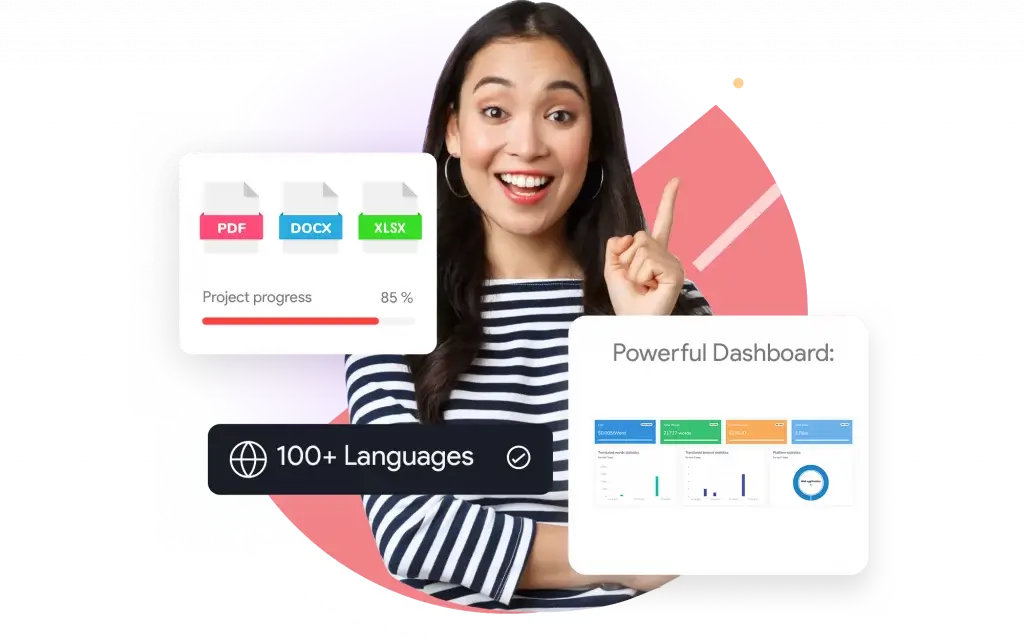
Register at DocTranslator.com
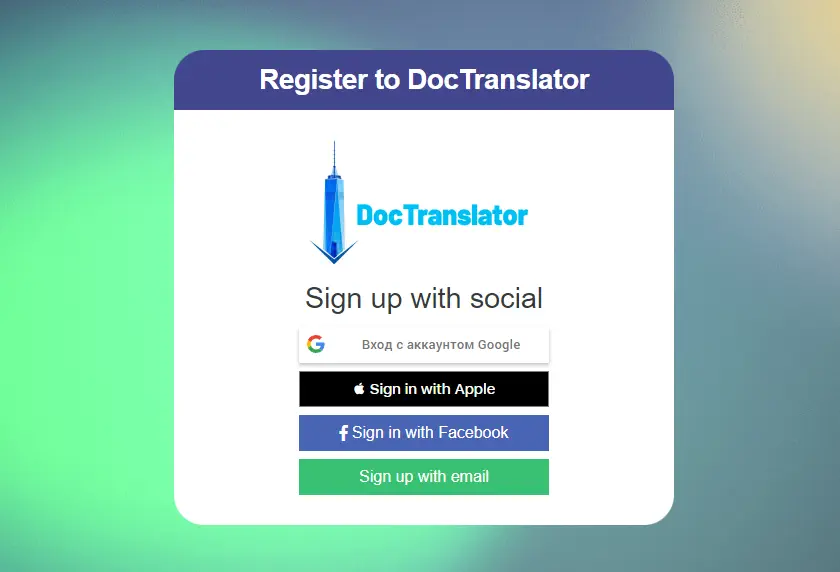
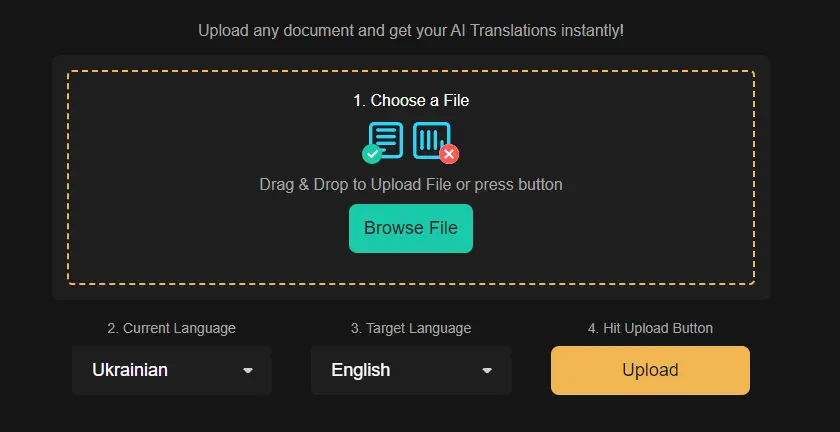
Upload your document
Select original and target languages
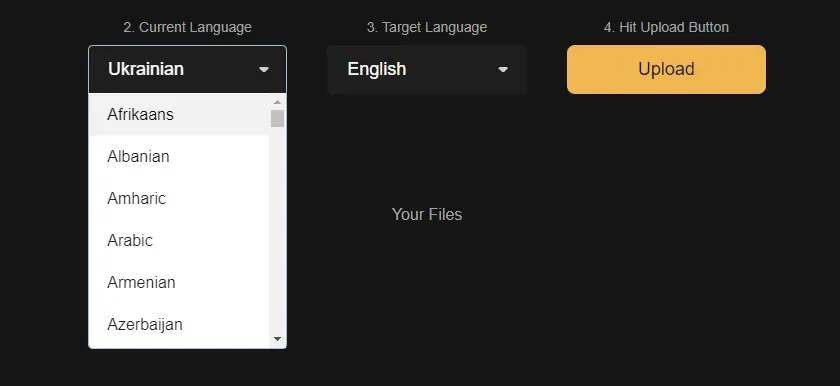

Translate!
JSON (JavaScript Object Notation) is a lightweight data interchange format that is easy for humans to read and write and easy for machines to parse and generate. It is often used to transmit data between a server and a web application or between different parts of an application.
Here are some key characteristics of JSON files:
1. Data Format: JSON is used to represent structured data in a text format. It consists of key-value pairs where data is associated with a name (the key) and a value. These key-value pairs can be nested, allowing for the creation of complex data structures.
2. Data Types: JSON supports various data types, including strings, numbers, booleans (true/false), arrays (ordered lists of values), and objects (unordered collections of key-value pairs).
3. Human-Readable: JSON is designed to be human-readable and easy to write. Data is typically organized in a clear and concise format, making it easy for developers to work with.
4. Language Agnostic: JSON is not tied to any specific programming language and can be used with a wide range of programming languages and platforms. This makes it an excellent choice for data interchange in web services and APIs.
5. Lightweight: JSON is a lightweight format, meaning it doesn’t have a lot of extra overhead. This makes it efficient for transmitting data over the internet, especially in situations where bandwidth is limited.
6. Extensible: JSON is extensible, allowing you to define custom data structures and formats as needed for your application.
Here’s an example of a simple JSON object:
“name”: “John Doe”,
“age”: 30,
“isStudent”: false,
“hobbies”: [“reading”, “hiking”, “cooking”],
“address”: {
“street”: “123 Main St”,
“city”: “Exampleville”,
“state”: “CA”,
“postalCode”: “12345”
In this example, you can see key-value pairs representing various types of data, including strings, numbers, booleans, arrays, and even a nested object.
JSON is widely used in web development, data storage, and data exchange between different systems due to its simplicity and flexibility. It’s a common format for configuration files, API responses, and more.
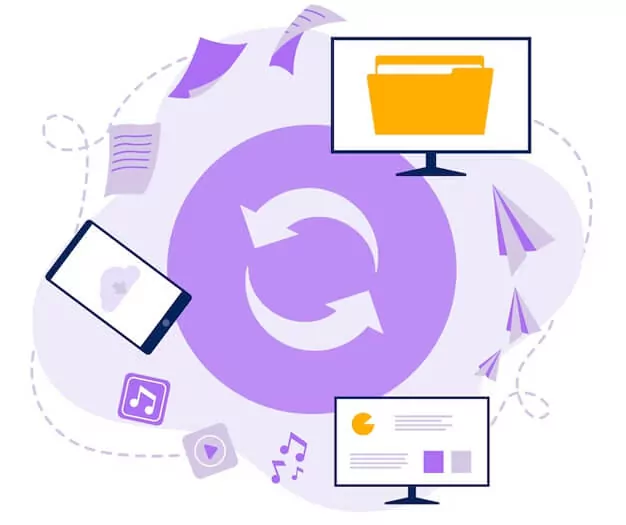
The cost of Translate JSON File can vary greatly depending on several factors. These factors include the length and complexity of the content, the target language and audience, and the level of localization required.
Translate JSON File can range from a few cents to several dollars per word, depending on the language, subject matter, and level of difficulty. For a simple JSON file with a small amount of text and no audio, the cost of translation might be on the lower end of this range.
However, it’s important to keep in mind that Translate JSON File can be a complex and time-consuming process. The cost of translation will reflect the level of effort required to produce a high-quality translation that is suitable for the target audience.
It is difficult to provide a more specific estimate without more information about the content and the specific requirements for the translation. Therefore, it’s recommended to consult with a professional translation service to determine the exact cost of translating a JSON file. By doing so, developers can ensure that they receive a high-quality translation that is both accurate and culturally appropriate for their target audience.

We use cookies to enhance your browsing experience, show personalized advertising or content, and analyze our traffic. By clicking "Accept All" you agree to our use of cookies.
We use cookies to help you navigate effectively and perform certain functions. Detailed information about all the cookies in each consent category can be found below. Cookies categorized as "Necessary" are stored in your browser as they are essential for the functioning of the website's basic features. We also use third-party cookies that help us analyze how you use this website, store your preferences, and provide content and advertising relevant to you. These cookies will be stored in your browser only with your prior consent. You may enable or disable some or all of these cookies, but disabling some of them may affect your online experience.
Necessary cookies are required to enable the basic features of this site, such as providing secure log-in or adjusting your consent preferences. These cookies do not store any personally identifiable data.
Analytical cookies are used to understand how visitors interact with the website. These cookies help provide information on metrics such as the number of visitors, bounce rate, traffic source, etc.
Performance cookies are used to understand and analyze the key performance indexes of the website which helps in delivering a better user experience for the visitors.
Advertisement cookies are used to provide visitors with customized advertisements based on the pages you visited previously and to analyze the effectiveness of the ad campaigns.